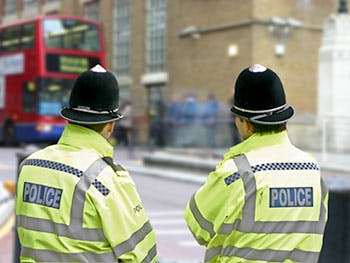EXPERT COMMENT LAST UPDATED : 20 JULY 2018

As the Office for National Statistics release new crime figures, Birmingham City University criminologists Professor Elizabeth Yardley, Professor David Wilson and Emma Kelly comment on why the issues surrounding homicide and violent crime are about much more than just numbers.
This week the most recent crime figures were released by the Office for National Statistics (ONS). One particular group of offences that always grabs headlines is homicide. Homicide describes the unlawful taking of a life, to which a range of penalties can apply based on culpability and intention (Brookman, 2005). Essentially, homicide is the act of killing and when used by the ONS, this term encompasses the legal outcomes of murder, manslaughter, corporate manslaughter and infanticide.
The latest data tells us that the year ending March 2018 was the fourth consecutive year to see an increase in the number of homicides recorded by the police. There were 701 homicides in this time period, representing a 12% increase on the previous year.
Many people will point to the fact that this was the year in which the Hillsborough deaths and the victims of the Manchester and London terror attacks were included in the figures and, as such, the numbers could be misleading. But the figure of 701 actually excludes these victims. This comes after a long-term decline in homicide rates over approximately a 30-year period.
For many years, academics and social commentators have been reassuring us that the risk of being a victim of homicide is reducing and, in any event, it’s a very rare crime. So move along, nothing to see here.
The latest figures have got people talking - perhaps the past few years aren’t a blip in the data but indicative of something more sinister.
We could spend a lot of time talking about the accuracy of homicide figures, or focus on a concept known as the ‘dark figure’ of homicide. This is a term used by criminologists to suggest that many homicides will never even make it into the crime statistics due to undiscovered bodies, misjudgements in determining a cause of death, inaccurate coroners’ verdicts and a whole range of other issues.
We’re not going to do that. Wrangling over whether homicide is going up, down or staying about the same is a distraction from more important questions.
As ultra-realists we suggest that the economy and consumerism are central to understanding violent crime like homicide. In a consumer society, we are encouraged to desire and purchase objects and experiences both to fit in and to stand out. But what we are fitting in to is not a harmonious collective, in which we have empathy and concern for the wellbeing of our fellow humans.
What we are fitting into is a system in which we are all pitted against one another. We are all trying to outdo each other in a competitive, selfish culture which masquerades as liberalism, free choice and self-reliance, as we all strive to be individual and unique. But it doesn’t stop there.
As Winlow and Hall say, consumer culture has encouraged the growth of problematic forms of narcissism that rest not simply on advancing the interests of the self, but advancing one’s interests in relation to the downfall of others.
How is homicide meaningful in this context? Why does someone decide to inflict harm on someone else? What is it that offenders want when they take the life of another?
This desire to do harm is one that requires a lot more attention than it has been given. The philosopher Jacques Lacan argued that when we desire something it signifies absence and lack and so we feel the urge to fill a void. What void does homicide fill? The revenge homicide amongst young men on the streets gives rise to questions of honour and reputation. The domestic homicide behind closed doors makes us consider the gendered dynamics of power - of the intense need to be in control of our families and households. The terror attack in the public space forces us to consider the concept of fear and how powerful this can be.
The ONS stated that homicide offences tend to be concentrated in London and other metropolitan areas. We would argue that it is no coincidence that violent crime is prominent in the areas of the country where inequality is at its most stark, where the gap between the richest and the poorest is widest, and where the powerful and privileged park their Ferraris only yards away from people sleeping rough in doorways.
The ideology of consumer capitalism encourages us not to value the rights and feelings of other people. We are socialised to be in competition and to win at all costs. Clearly not all of us are going to go out and kill someone else in pursuit of the things we want. However, looking more critically at the decisions and realities of those who do is of crucial importance for they are not anomalies, or aberrations but the sharp end of a wedge; an extreme – they are the end of a spectrum.
So, here’s what we need to remember.
Consumer capitalism encourages harm in various forms and in which we all engage. We are passively aggressive in our communications with others, we shamelessly take credit for something someone else’s effort has produced, and we delight in this demise of people we don’t like. And, yes, sometimes we kill.
Only when we start to recognise that homicide is a form of harm that is not an isolated, exceptional, atypical form of violence, or something that comes ‘out of the blue’, will we ever be ready to address questions of motivation and identify realistic actions for prevention.
Our obsession with homicide rates, their accuracy or inaccuracy is therefore merely a convenient distraction from the important questions that we really need to be asking.